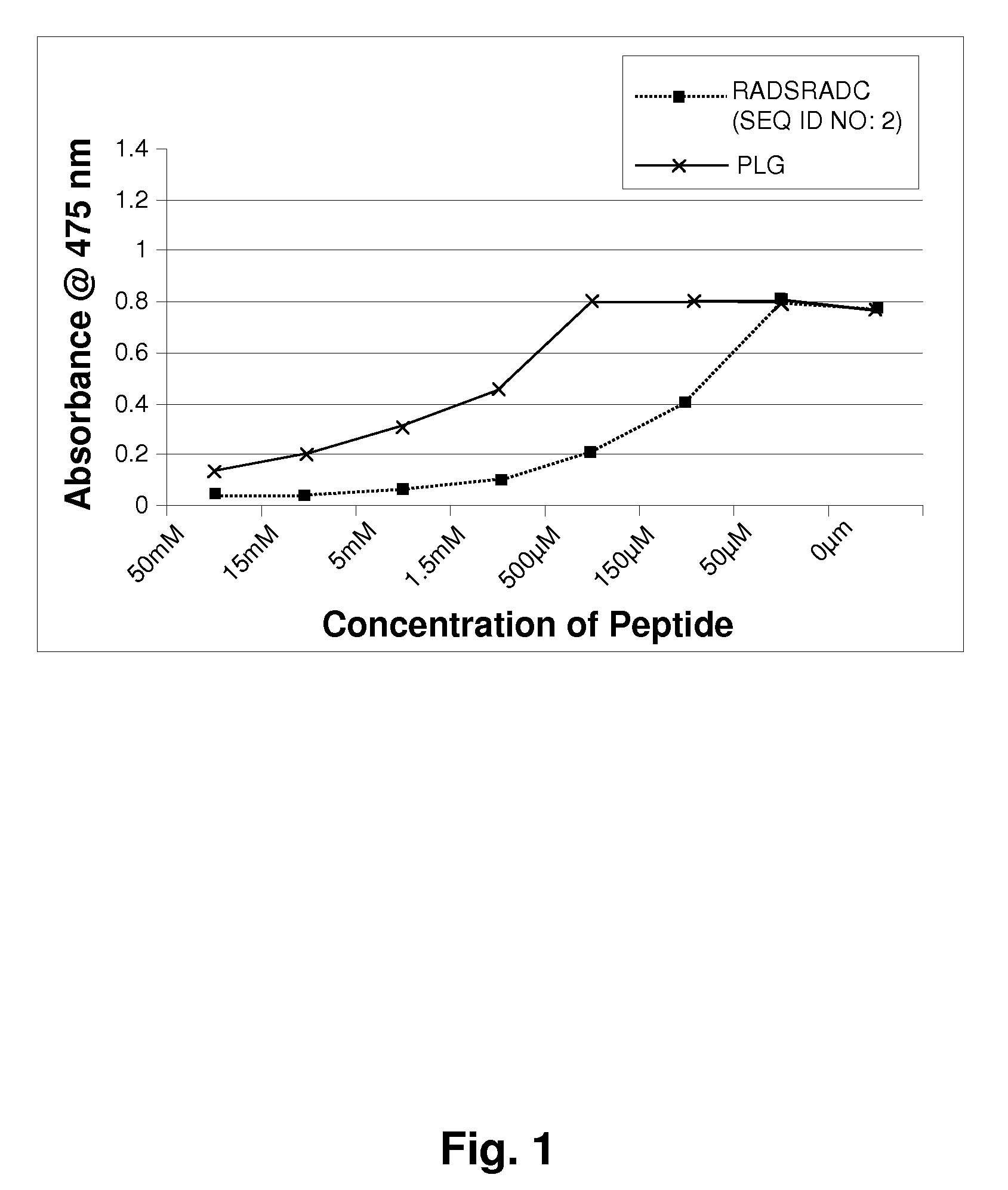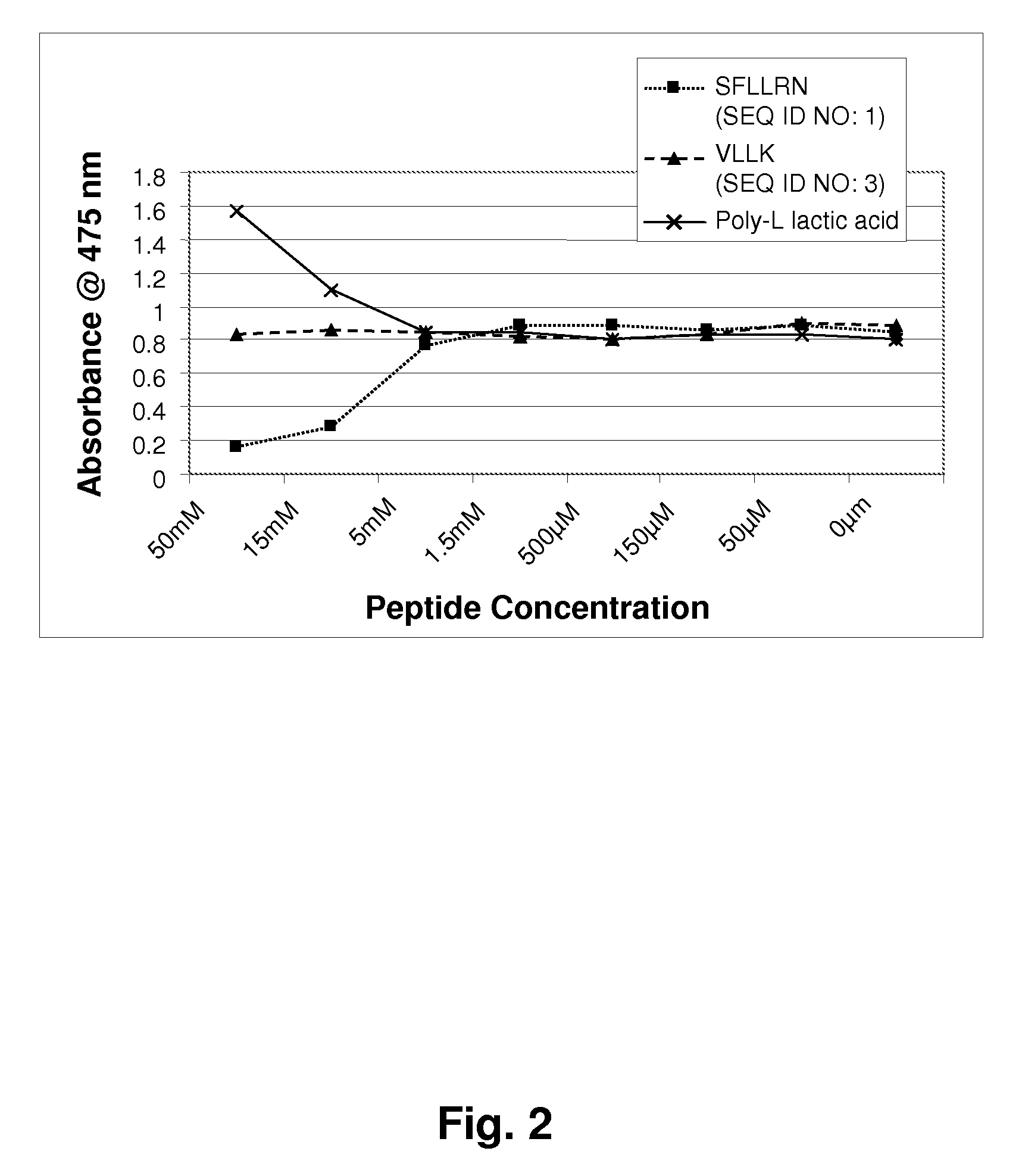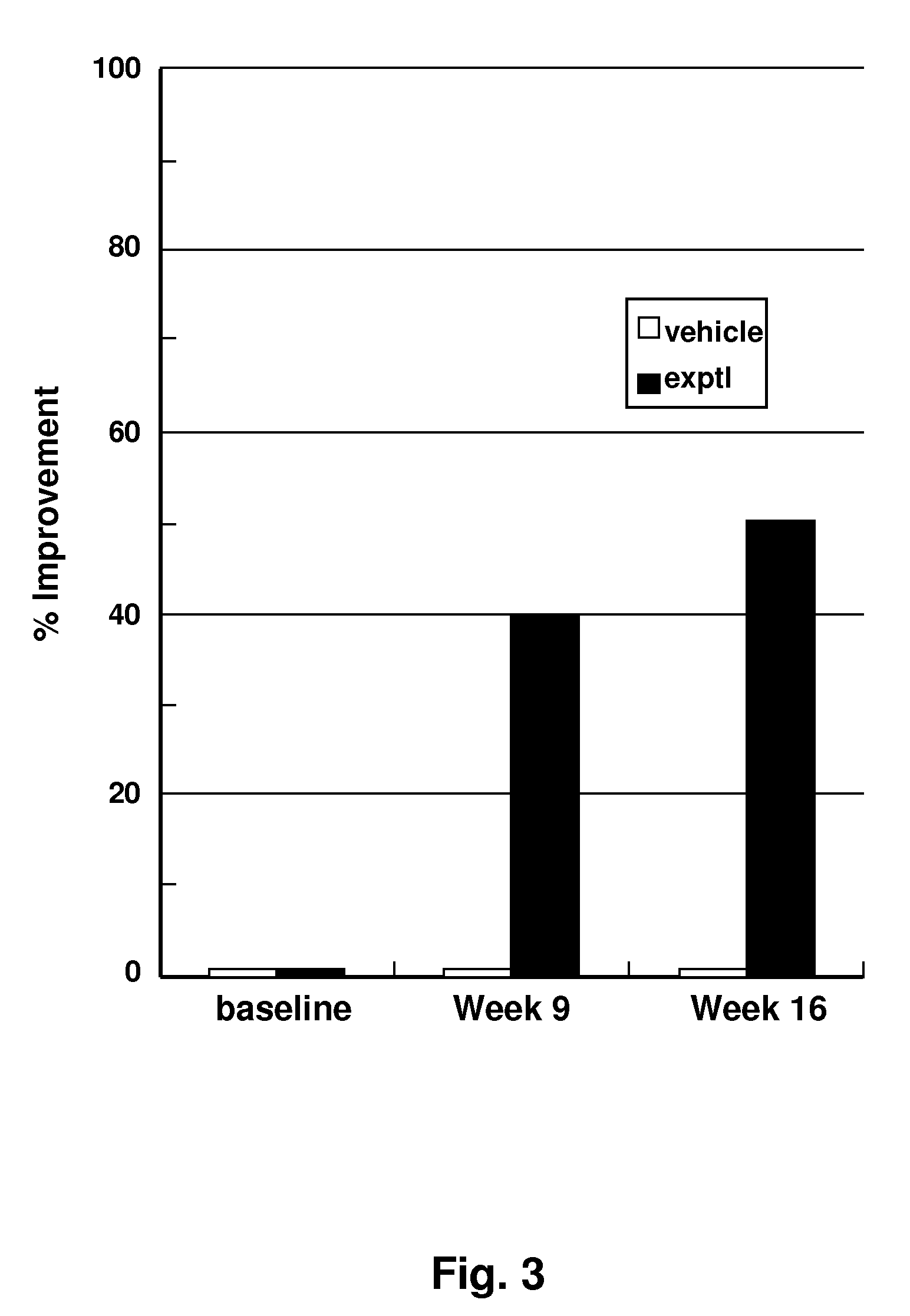Peptide tyrosinase inhibitors and uses thereof
a tyrosinase inhibitor and peptide technology, applied in the field of tyrosinase inhibitors, can solve the problems of large variability of efficacy, undesirable side effects, chromatic aberration of hq ointments, etc., and achieve the effect of improving skin uptak
- Summary
- Abstract
- Description
- Claims
- Application Information
AI Technical Summary
Benefits of technology
Problems solved by technology
Method used
Image
Examples
examples
Design and In Vitro Testing
[0123]Mushroom tyrosinase, L-tyrosine and other chemicals for the enzymatic reaction were obtained from Sigma-Aldrich. Short sequence peptides 1-7 were designed based on potential homology with known tyrosinase substrates. All synthetic peptides were between 3 and 10 amino acids in length and were synthesized using tBoc and / or Fmoc solid phase chemistry. Peptides were confirmed to be of research grade (>80% purity) in all cases. It is understood that research grade reagents were used for convenience, and it is preferred that the peptides be prepared to pharmaceutical grade purity, greater than 90%, preferably greater than 99% pure.
[0124]Inhibition of tyrosinase by experimental peptides was determined by colorimetric detection of dopachrome, the reaction product of the substrate L-tyrosine. Mushroom tyrosinase, L-tyrosine, and a potassium phosphate buffer (pH 6.8) were added to 96-well plates containing short sequence peptides dissolved in 5% DMSO and incub...
PUM
 Login to View More
Login to View More Abstract
Description
Claims
Application Information
 Login to View More
Login to View More - R&D Engineer
- R&D Manager
- IP Professional
- Industry Leading Data Capabilities
- Powerful AI technology
- Patent DNA Extraction
Browse by: Latest US Patents, China's latest patents, Technical Efficacy Thesaurus, Application Domain, Technology Topic, Popular Technical Reports.
© 2024 PatSnap. All rights reserved.Legal|Privacy policy|Modern Slavery Act Transparency Statement|Sitemap|About US| Contact US: help@patsnap.com










